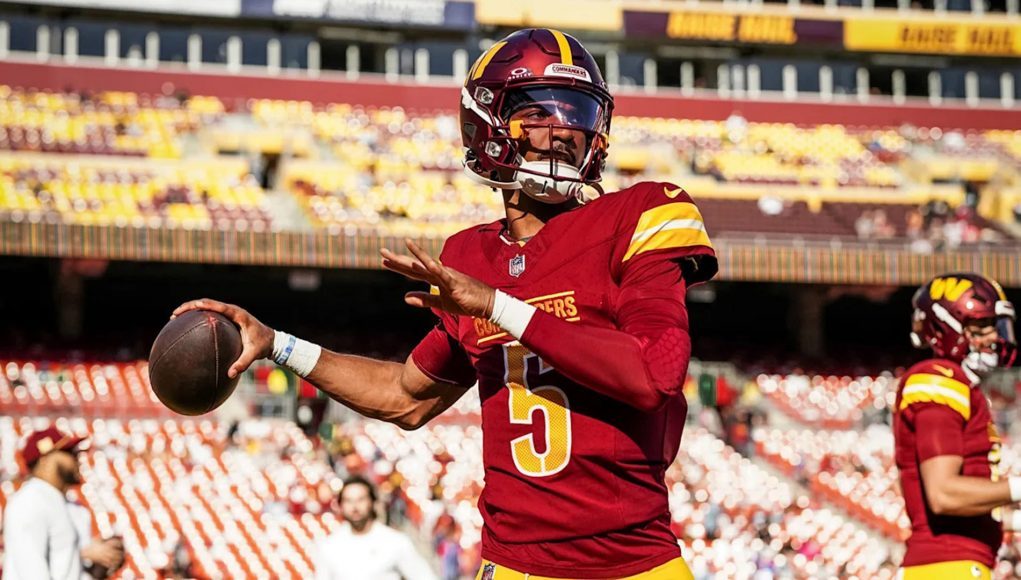The Washington Commanders’ offensive coordinator Kliff Kingsbury is all-in on VR training, something the team’s star quarterback Jayden Daniels credits for accelerating his development, the New York Times reports.
A former quarterback for Texas Tech himself, the intense realism was clear to Kingsbury from the snap.
“The first time I put [the VR headset] on, I backed into the wall,” Kingsbury told NYT. “It felt like the [pass] rush was coming.”
Daniels is a big driver behind the Commanders’ adoption of the app, which was initially developed by German company Cognilize for top flight soccer players. Daniels says he owes his rapid progress to his Vr training, having used the app during his Heisman Trophy-winning 2023 season quarterbacking at LSU, and now leading the Commanders to a 5-2 record.
Essentially, Cognilize’s app gives players like Daniels to the ability do mental reps at significantly lower physical strain than training on the field, allowing him to rush through plays at the highest speed to better hone his ability to read defenses.
Daniels explained how it work on the ‘All Facts No Brakes’ show with Keyshawn Johnson back in May:
“They load in the stadium you’re playing in, and it looks exactly like the stadium. And it’s moving faster than a human being would be moving. I’ll get in there, and say, they’ll probably give me 7 seconds to know the play. Pre-snap, I get to see the coverage and know where I’m going with the football, all before the play clock runs out.” That, and Kingsbury’s voice directs the VR sessions, giving Daniels real insight into virtual plays.
“It’s as real as game reps,” Kingsbury explained, adding that the VR app has become a major component of their weekly process. To boot, Daniels works with the app every morning, comparing it to a “flight simulator for QBs.”
“It’s a unique technology, and it’s definitely for the quarterbacks,” Kingsbury said. “I think it is more effective than them just watching the film. They’re going through their reads, they’re going through their progressions, they’re seeing it.”
Despite suffering a rib injury during the recent 40-7 blowout victory against the Carolina Panthers, raising concerns about Daniels’ availability for the remainder of the season, the news actually looks good. Daniels may only miss out on the upcoming game against the Chicago Bears—giving him more time to get mental reps in at his own speed in VR and recover from the injury without stopping training regime altogether.







